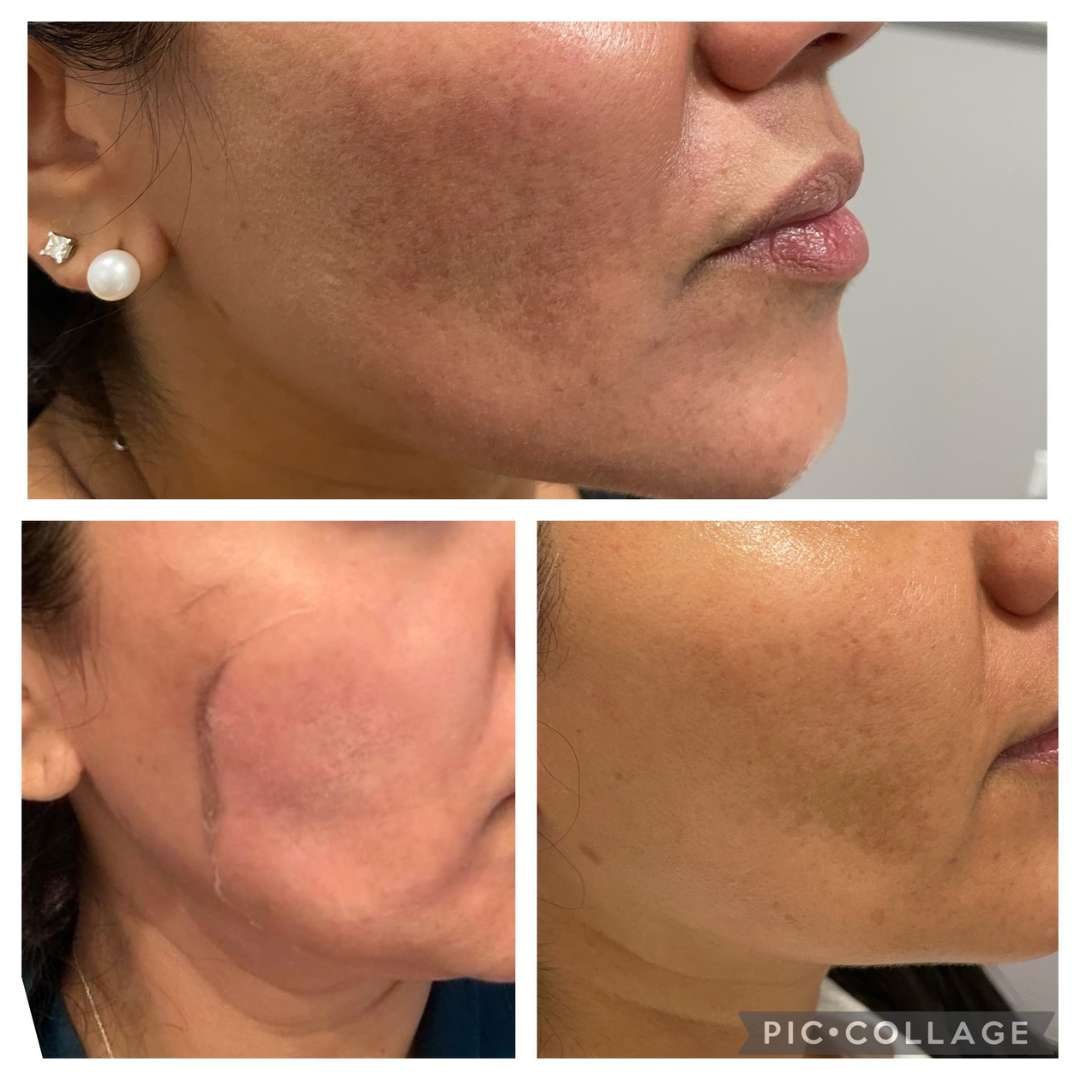If you’re looking for a skin rejuvenation treatment, chemical peels are one of the most effective options available. Chemical peels can help improve the appearance of fine lines, wrinkles, acne scars, and hyperpigmentation. In this blog, we’ll take a closer look at what chemical peels are, how they work, and the benefits they can offer.
What Are Chemical Peels?
If you’re looking for a skin rejuvenation treatment, chemical peels are one of the most effective options available. Chemical peels can help improve the appearance of fine lines, wrinkles, acne scars, and hyperpigmentation. In this blog, we’ll take a closer look at what chemical peels are, how they work, and the benefits they can offer.
What Are Chemical Peels?
Chemical peels work by exfoliating the outermost layer of skin. The chemical solution is applied to the skin, and it works by breaking down the bonds that hold dead skin cells together. As a result, the outermost layer of skin peels away, revealing smoother, healthier-looking skin underneath. The type of chemical solution used and the concentration will depend on the type of peel and the severity of the skin imperfections being treated.
How Do Chemical Peels Work?
Chemical peels work by exfoliating the outermost layer of skin. The chemical solution is applied to the skin, and it works by breaking down the bonds that hold dead skin cells together. As a result, the outermost layer of skin peels away, revealing smoother, healthier-looking skin underneath. The type of chemical solution used and the concentration will depend on the type of peel and the severity of the skin imperfections being treated.
The Benefits of Chemical Peels
Chemical peels offer a variety of benefits, including:
Improved Skin Texture
Chemical peels can help reduce the appearance of fine lines and wrinkles by stimulating collagen production. Collagen is a protein that gives our skin its structure and elasticity. As we age, our natural collagen production slows down, leading to the development of fine lines and wrinkles. Chemical peels work by removing the outermost layer of skin, which stimulates collagen production and leads to smoother, plumper-looking skin. The type of peel used and the concentration of the chemical solution will depend on the severity of the wrinkles being treated. Chemical peels can be an effective way to achieve a more youthful and refreshed appearance.
Reduced Fine Lines and Wrinkles
Collagen is a vital component of our skin’s structure, providing it with the elasticity and firmness it needs to remain youthful looking. However, as we age, our body’s natural collagen production declines, leading to the formation of fine lines and wrinkles. Chemical peels work by penetrating deep into the skin, promoting the production of new collagen, which helps to tighten and firm the skin. This results in a reduction of fine lines and wrinkles, making the skin appear smoother and more youthful. Depending on the severity of the wrinkles being treated, a dermatologist may recommend a deep chemical peel, which can penetrate even deeper into the skin to address more advanced signs of aging. By stimulating collagen production, chemical peels can help you achieve a more youthful, vibrant complexion.
Reduced Fine Lines and Wrinkles
Chemical peels are an effective way to address hyperpigmentation, including sunspots, age spots and PIH (post inflammatory hyperpigmentation) which can be difficult to treat with topical skincare products alone. The chemical solution used in a peel can penetrate deep into the skin, breaking up the excess melanin that causes hyperpigmentation. As the outermost layer of skin is removed, it allows for the growth of new skin cells, resulting in a more even skin tone. The type of peel and concentration of the chemical solution used will depend on the severity of the hyperpigmentation being treated. By reducing the appearance of hyperpigmentation, chemical peels can help you achieve a more radiant, even-toned complexion. A series of peels may be needed for best results.
Reduced Acne Scarring
Chemical peels are a popular skin rejuvenation treatment that can help reduce the appearance of acne and acne scarring. The exfoliating action of the peel works to remove the outermost layer of skin, which can help to minimize the appearance of acne scars. Chemical peels use different types of chemical solutions to achieve this result, such as glycolic acid, salicylic acid, or trichloroacetic acid, depending on the severity of the acne scarring being treated. By removing the damaged outer layer of skin, new skin cells are stimulated to grow, resulting in smoother and more even-looking skin. Chemical peels are a safe and effective way to address acne scarring, leaving you with a clearer, more youthful complexion.
Reduced Acne Scarring
If you’re considering a chemical peel, it’s important to speak with a qualified dermatologist or aesthetician. They can help determine which type of chemical peel is best suited for your skin type and skin concerns. It’s also important to follow post-treatment instructions carefully to ensure the best possible results.
Chemical peels are an effective skin rejuvenation treatment that can help improve the appearance of fine lines, wrinkles, acne scars, and hyperpigmentation. With the right treatment plan and post-treatment care, chemical peels can revitalize your skin and leave you with a more youthful, radiant complexion.




